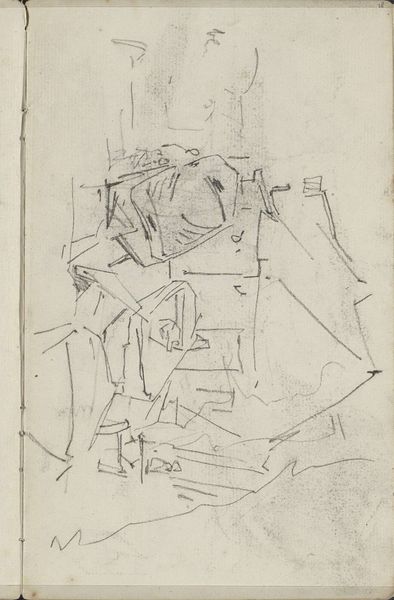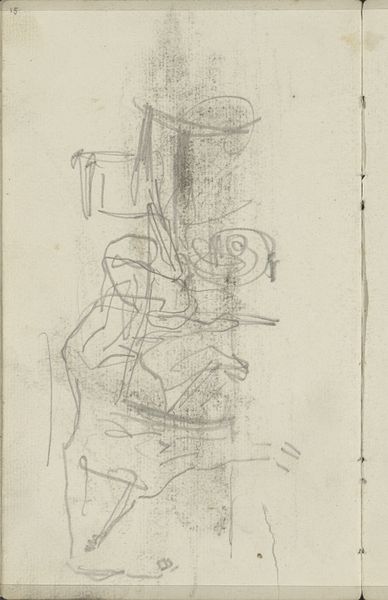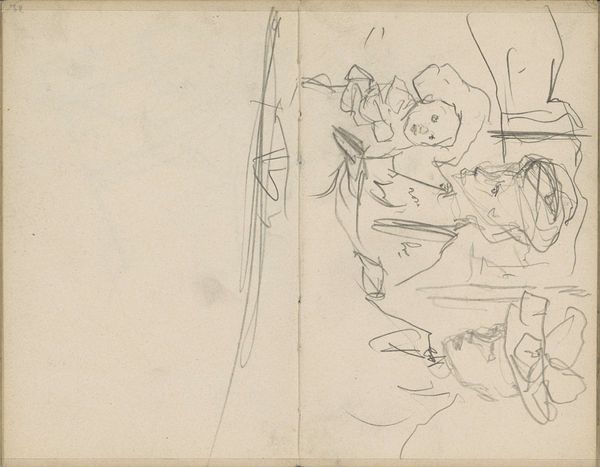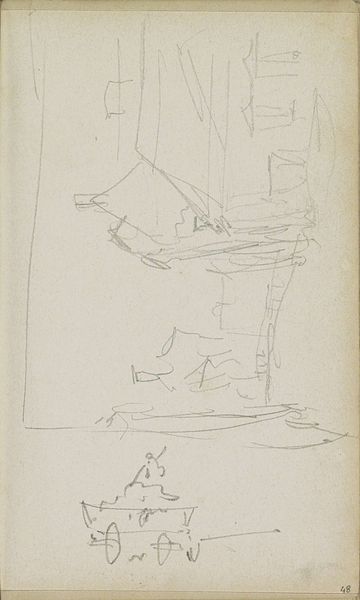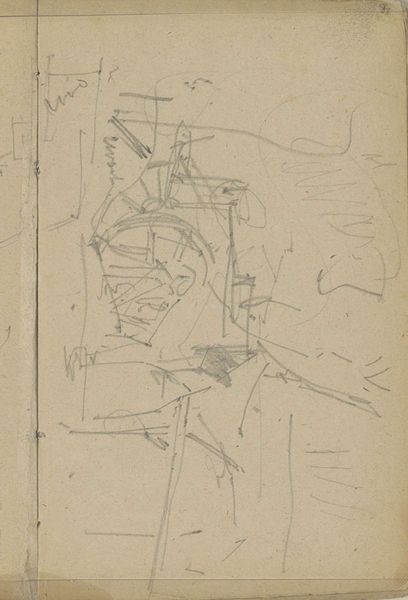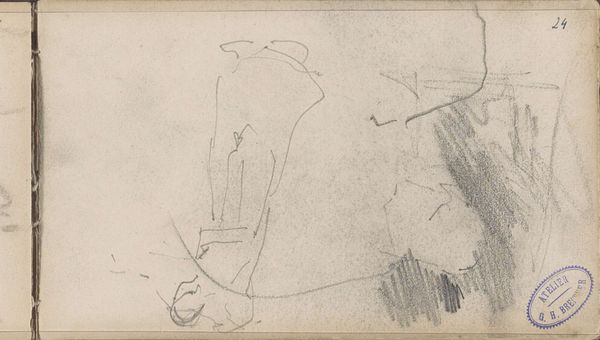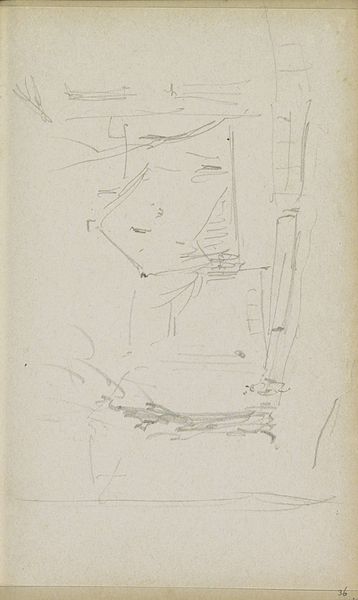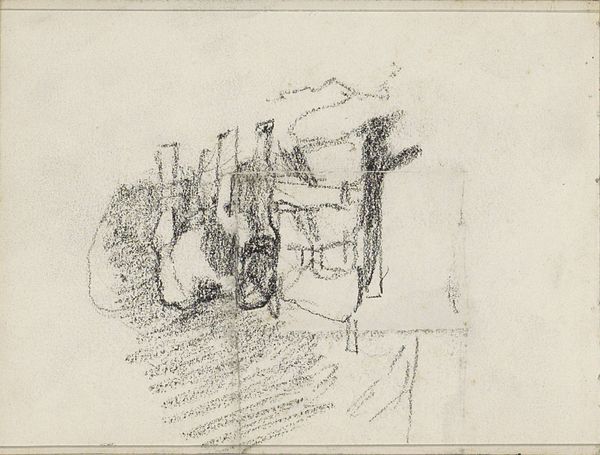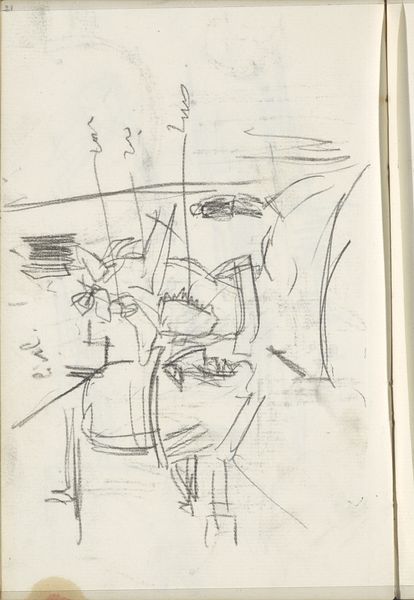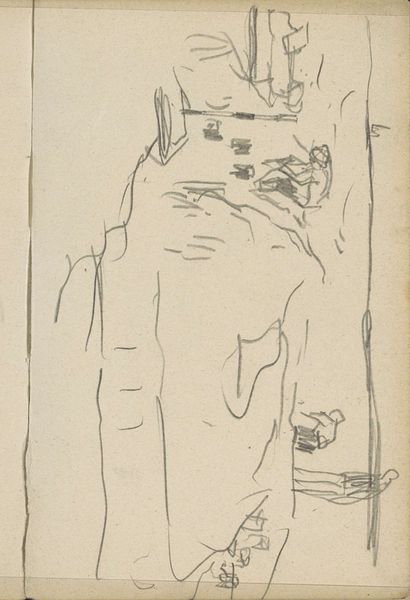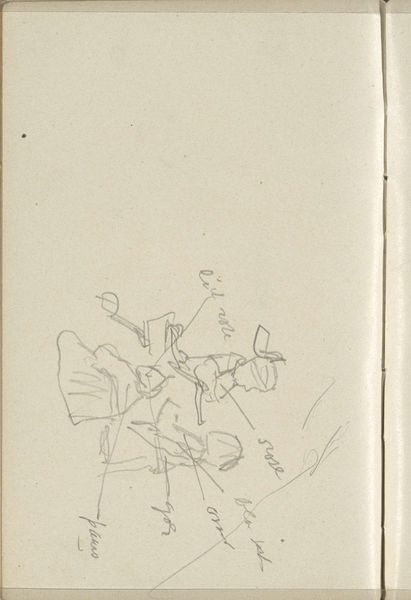
drawing, pencil
#
portrait
#
drawing
#
narrative-art
#
figuration
#
pencil
#
academic-art
Dimensions: height 345 mm, width 282 mm
Copyright: Rijks Museum: Open Domain
Editor: This drawing, titled "Boomplanter" by Adolf le Comte, made sometime between 1860 and 1921, uses pencil to depict what seems to be someone planting a tree. The sketchiness gives it an unfinished feel. What does this piece tell you? Curator: It strikes me as an exercise in observation rather than a polished artwork intended for display. The looseness speaks to a rapidly industrializing society, a world that was starting to value speed and efficiency. Do you see how the 'unfinished' quality might reflect a changing artistic landscape, where the *process* of creating began to hold as much weight as the finished product? Editor: I guess it does. It feels more like a snapshot or a quick study, less like something meant for a gallery. Almost journalistic. Curator: Precisely. Think of the socio-political climate then. The rise of photography was challenging the traditional role of painting, especially in representational accuracy. Artists like le Comte, working within academic art traditions, had to re-evaluate their purpose. How might they have perceived their societal function versus, say, someone like Courbet? Editor: I see! So, where Courbet went towards realism and making statements about everyday life, le Comte is holding on to tradition, but reflecting modern anxieties, unconsciously or consciously, in technique. Curator: It is possible to view it that way. By not aiming for photorealistic perfection but, instead, capturing a fleeting moment of labor, Le Comte could be carving out a new niche for drawing within the larger ecosystem of image production and societal expectation. The “Boomplanter” might also be seen to express national pride, reflecting the work of revitalizing and investing in a nation’s landscape. What are your thoughts? Editor: I never would have thought a quick sketch like this could have so much depth. I appreciate you sharing these insights! Curator: And I appreciate your open mind. It's in these dialogues that the art truly comes alive.
Comments
No comments
Be the first to comment and join the conversation on the ultimate creative platform.
